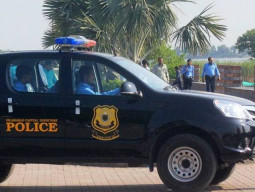
The PILER study was conducted to highlight the impacts of the 2010 and 2011 floods on the lives of the already marginalised rural populace of our country. The field survey for the study took place during 2012 and covered eight flood affected districts, including Thatta, Badin, Shikarpur, Muzaffargarh, Bahawalpur and Jaffarabad.
While land tenure patterns across different parts of rural Pakistan are not consistent, the PILER study found uneven access to land to be a common factor across the dozens of villages in the districts where fieldwork was conducted.
The villages in rural Sindh and Nasirabad division of Balochistan are still very feudal, given that most (70 to 85 per cent) of surveyed villagers were found to be tilling land belonging to landlords on the basis of sharecropping arrangements. However, in southern Punjab, sharecropping has been largely replaced by large-scale self-cultivation or lease farming, involving several powerful corporate or so-called ‘progressive’ farmers, who are making huge profits cultivating available land, at the cost of smaller farmers, who are finding it increasingly difficult to gain access to land they can till themselves. So they have to either settle for low paying daily wage jobs or move to large cities in search of work. However, it was estimated that 88 per cent of poor farmers (holding less than 12.5 per cent of land) owned only 49 per cent of land while a mere 1.5 per cent of powerful farmers (holding more than 150 acres of land) owned eight per cent of the entire agricultural land in the above mentioned areas.
Unfortunately, the lack of socio-economic opportunities in surrounding peri-urban areas does not offer much of a chance for the rural population to break away from the feudal-tribal stranglehold. Women are also severely exploited within this setup and they lack freedom to make independent choices concerning healthcare, children’s education, marriage as well as voting. A vast majority of the rural populace was found to be living in mud and straw huts, lacking infrastructure, such as paved roads, safe drinking water, sanitation facilities and access to decent educational and health facilities.
Even natural disasters like the 2010 and 2011 floods, which had wreaked havoc across a significant proportion of rural areas across the country, impacted large farmers and small farmers differently. This is because large farmers typically occupy higher grounds, and therefore their homes and lands were more protected from the ravages of the floods whereas the small farmers and tenants cultivate and live on land in low-lying areas, which submerged more readily.
Rehabilitation efforts following the massive flooding disaster presented opportunities to rebuild affected villages on higher grounds and with better drainage to protect villages from floods. However, these opportunities were lost due to the vested interests of the feudal-tribal nexus, and even corporate farmers. In the case of Sindh and Balochistan, large farmers opposed relocating villages fearing a loss of control over their indebted workforce (sharecroppers), who also provide them a captive vote bank, in turn enabling large farmers to maintain their political clout. Corporate farmers in southern Punjab, on the other hand, were seen to have welcomed the expulsion of sharecroppers from their areas into the major cities, since it provided them a chance to gain access to even larger tracts of land for commercial farming.
Given the prevailing inequalities associated with uneven land holdings in rural areas, a vast majority of the rural poor in our country are still being oppressed by a landowning minority and these already marginalised people remain most vulnerable to any future natural disasters.
Published in The Express Tribune, June 12th, 2015.
Like Opinion & Editorial on Facebook, follow @ETOpEd on Twitter to receive all updates on all our daily pieces.
















1713904359-0/burn-(1)1713904359-0-270x192.webp)
























COMMENTS
Comments are moderated and generally will be posted if they are on-topic and not abusive.
For more information, please see our Comments FAQ